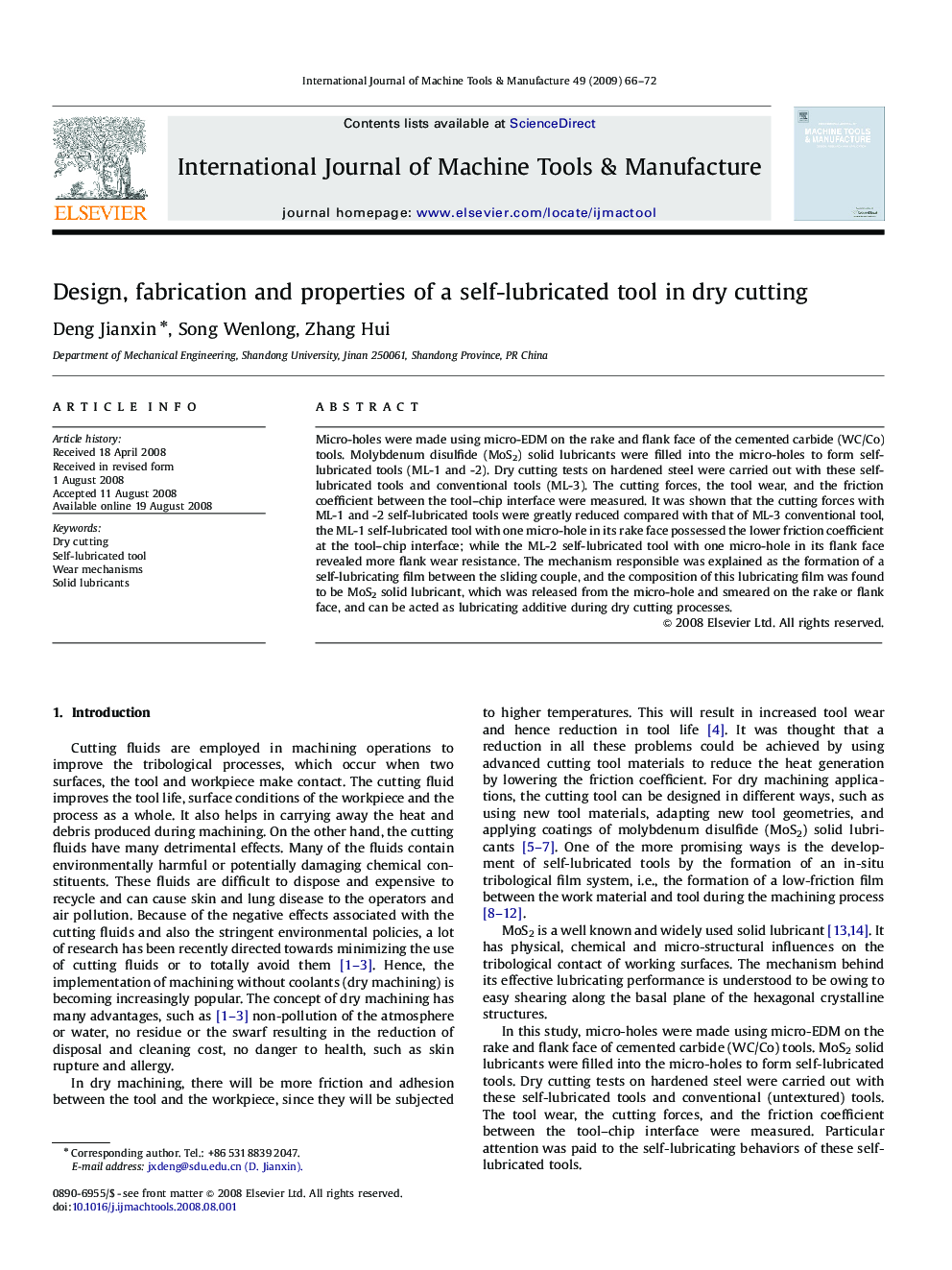| Article ID | Journal | Published Year | Pages | File Type |
|---|---|---|---|---|
| 784578 | International Journal of Machine Tools and Manufacture | 2009 | 7 Pages |
Micro-holes were made using micro-EDM on the rake and flank face of the cemented carbide (WC/Co) tools. Molybdenum disulfide (MoS2) solid lubricants were filled into the micro-holes to form self-lubricated tools (ML-1 and -2). Dry cutting tests on hardened steel were carried out with these self-lubricated tools and conventional tools (ML-3). The cutting forces, the tool wear, and the friction coefficient between the tool–chip interface were measured. It was shown that the cutting forces with ML-1 and -2 self-lubricated tools were greatly reduced compared with that of ML-3 conventional tool, the ML-1 self-lubricated tool with one micro-hole in its rake face possessed the lower friction coefficient at the tool–chip interface; while the ML-2 self-lubricated tool with one micro-hole in its flank face revealed more flank wear resistance. The mechanism responsible was explained as the formation of a self-lubricating film between the sliding couple, and the composition of this lubricating film was found to be MoS2 solid lubricant, which was released from the micro-hole and smeared on the rake or flank face, and can be acted as lubricating additive during dry cutting processes.
